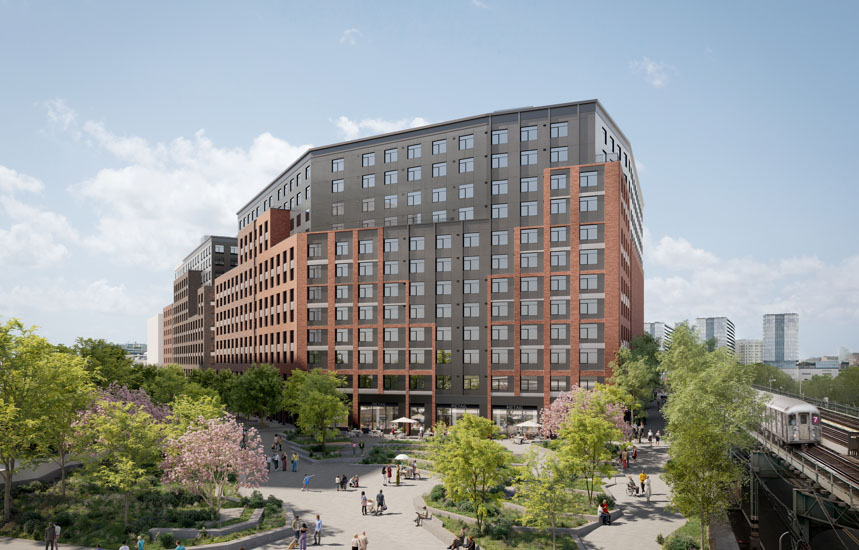Executive of the Month: Warren Dubitsky, partner at Herman Katz LLP

How did you get started in real estate tax law?
My first job out of law school was at the Nassau County Attorney’s Office where I was assigned to the Tax Certiorari and Condemnation Bureau. The major benefit of starting in government service is that you are handed a large amount of responsibility on major cases early on. I cut my teeth on many types of assessment litigation matters: major retail centers, office buildings, and multi-family housing including both rental buildings and co-ops/condos. By the time I transitioned into representing taxpayers, I had a firm grasp of the basics and was ready for new challenges in representing property owners across New York state. I joined Herman Katz as an associate in 2013 and am now a partner.
What type of work do you do now?
While our firm maintains a robust practice statewide, the majority of my practice is dedicated to New York City matters. We represent taxpayers in administrative hearings before the NYC Tax Commission and in court against the NYC Law Department to achieve assessment and tax relief. We work closely with clients who are looking to acquire new assets and redevelop existing properties. A key piece of any underwriting is knowing how a new acquisition or development will be taxed once acquired or completed. In the city, estimated future tax liabilities are generally based upon expected future income and expenses and, to a lesser extent, the purchase price or construction costs. We work closely with our clients to review acquisition scenarios and provide detailed future tax estimates and guidance based upon their internal projections on the deal. One of the key parts of that role is being candid with clients about the risks involved and arriving at a realistic estimate. We pride ourselves on providing clear-eyed guidance to our clients without being either overly optimistic or pessimistic with our projections.
We also advise clients who are redeveloping existing property. In that role we not only provide tax projections but also help clients navigate the process of obtaining tax benefits that they may be eligible for as a result of the construction or scope of the project. In the city, these include the Industrial Commercial Abatement Program (ICAP), Manhattan Commercial Revitalization Program (M-CORE), and IDA PILOT Agreements.
Finally, we also work with clients so that they can comply with the full regime of required annual assessment filings and tax benefit renewals including the Real Property Income & Expense filings (RPIE), Storefront Registry, ICIP/ICAP Certificates of Continuing Use, and other submissions. The city’s onerous filing demands (even for those taxpayers who are not challenging their assessments in any given year) are yet another heavy regulatory burden placed on property owners in the city. The potential penalties for failing to file can be severe including in rem monetary penalties, denial of a Tax Commission hearing, or the loss/suspension of property tax exemptions or abatements. We coordinate with our clients to ensure that they are aware of the multiple deadlines and that they are in compliance with the various filing requirements.
What are some challenges facing property owners in New York?
Most readers of this article likely have intimate familiarity with the major challenges facing the NYC real estate industry. Whether it is the ongoing occupancy issues in class B and C office buildings, the hollowing out of once robust retail corridors throughout the city, or the massive damage wrought by the residential rent law changes of 2019, the actual challenges are well documented by this outlet and other sources that cover the industry. My role as an advocate is to communicate to either the tax commission or the court exactly how those issues are intertwined with the particular property that I’m representing, using the data from the subject building and putting it in prospective of the market/regulatory headwinds that these buildings are facing. By its very nature, the property assessment system is backward-looking. It relies on data from prior time periods to set assessments that property owners currently pay taxes under. In many cases, I argue that the backward-looking data fails to accurately capture a building’s current and future income generating potential. When we prepare a case for a tax commission hearing or litigate a case in court, we are working closely with the client to substantiate our claims that the building is over-assessed. For example, there are many buildings where commercial rents, at least on a headline basis as announced in trade publications, may be at or above what they were pre-pandemic. However once you dig into the details of the underlying leases and fully account for tenant concessions that had to be provided in order to make the deal happen (such as larger tenant work letters, free rent periods lasting a year or more, or even lease buyout money to help the tenant depart its current location), the actual effective rents can show massive deterioration from where they were in 2019. Successful cases are made by close review of the details of a building’s lease(s) and the other particulars of the property.
Are there any special challenges facing New York City’s Assessment System?
The current New York City assessment system has been in place for over four decades. Due to both its design and annual targeted class share adjustments by the legislature intended to shield residential properties, every year a larger percentage of the tax burden is pushed to the commercial sector. There is a maxim from economics called Stein’s Law which says, “If something cannot go on forever, it will stop.” At a certain point, the city’s reliance on placing an ever-larger burden on commercial properties will have to end. The issue becomes how much pain will there be for property owners and the city’s finances before there is a wholesale adjustment of the tax system. Last month the Court of Appeals (New York’s highest court) heard oral arguments in a case seeking to declare a large portion of the NYC assessment system unconstitutional. While it is nice to think an existential threat to the system itself (which provides roughly one third of New York City’s budget) might spur lawmakers in both Albany and City Hall to start constructing an improved property tax system that would encourage more development including badly needed housing, so far, lawmakers seem reluctant to touch the issue.
What work do you do outside of the city?
Our firm practices across New York State, including Long Island, the Hudson Valley, the Capital Region, and Western New York and has won significant tax relief for various types of properties including office, industrial, retail, hotels, and golf courses to name a few. We also work with private equity firms, REITs, and large national chains to oversee property tax issues with their portfolios, both statewide and nationally.
Related Cos. and Sterling Equities open housing lottery for Willets Point Commons


Strategies for turning around COVID-distressed properties - by Carmelo Milio







.gif)


.jpg)
.gif)